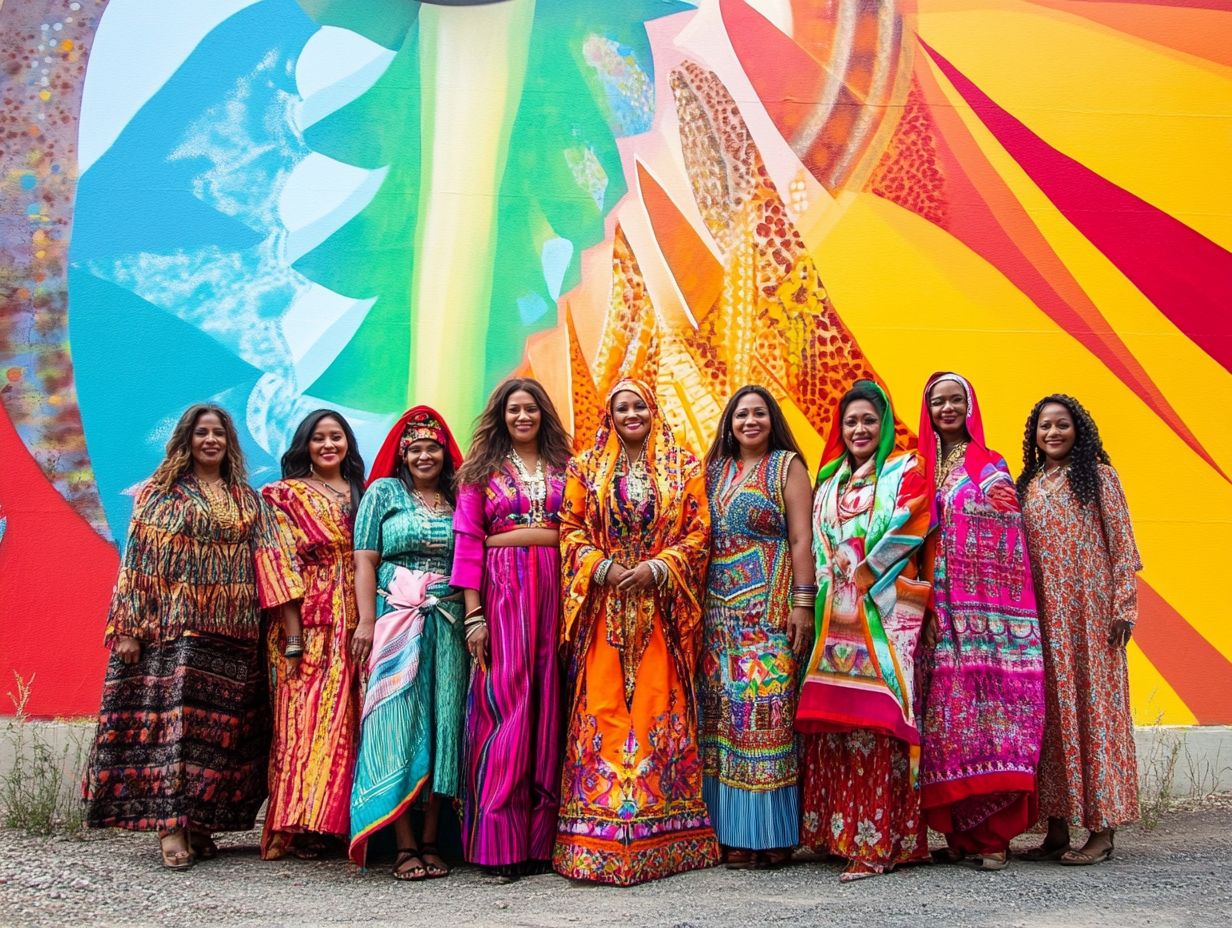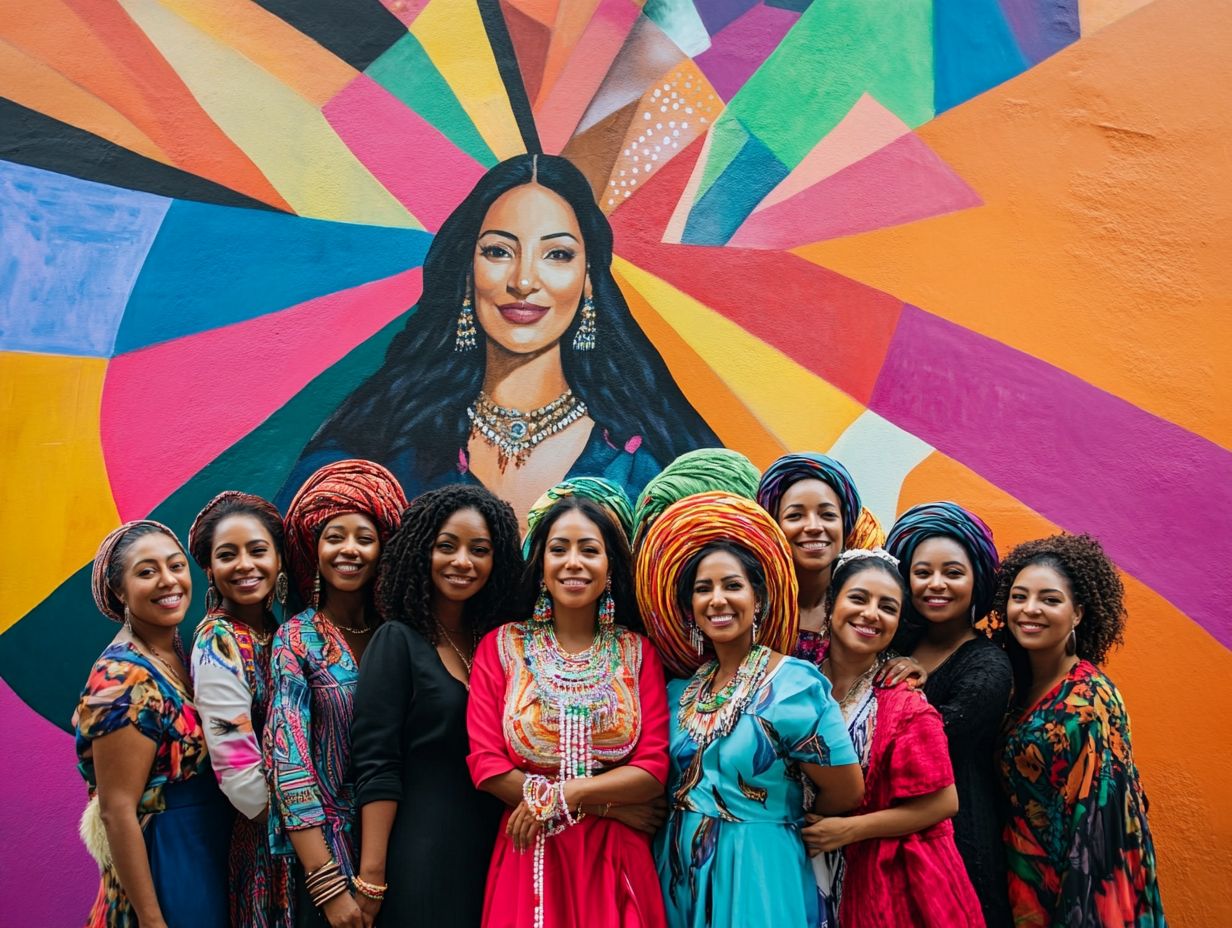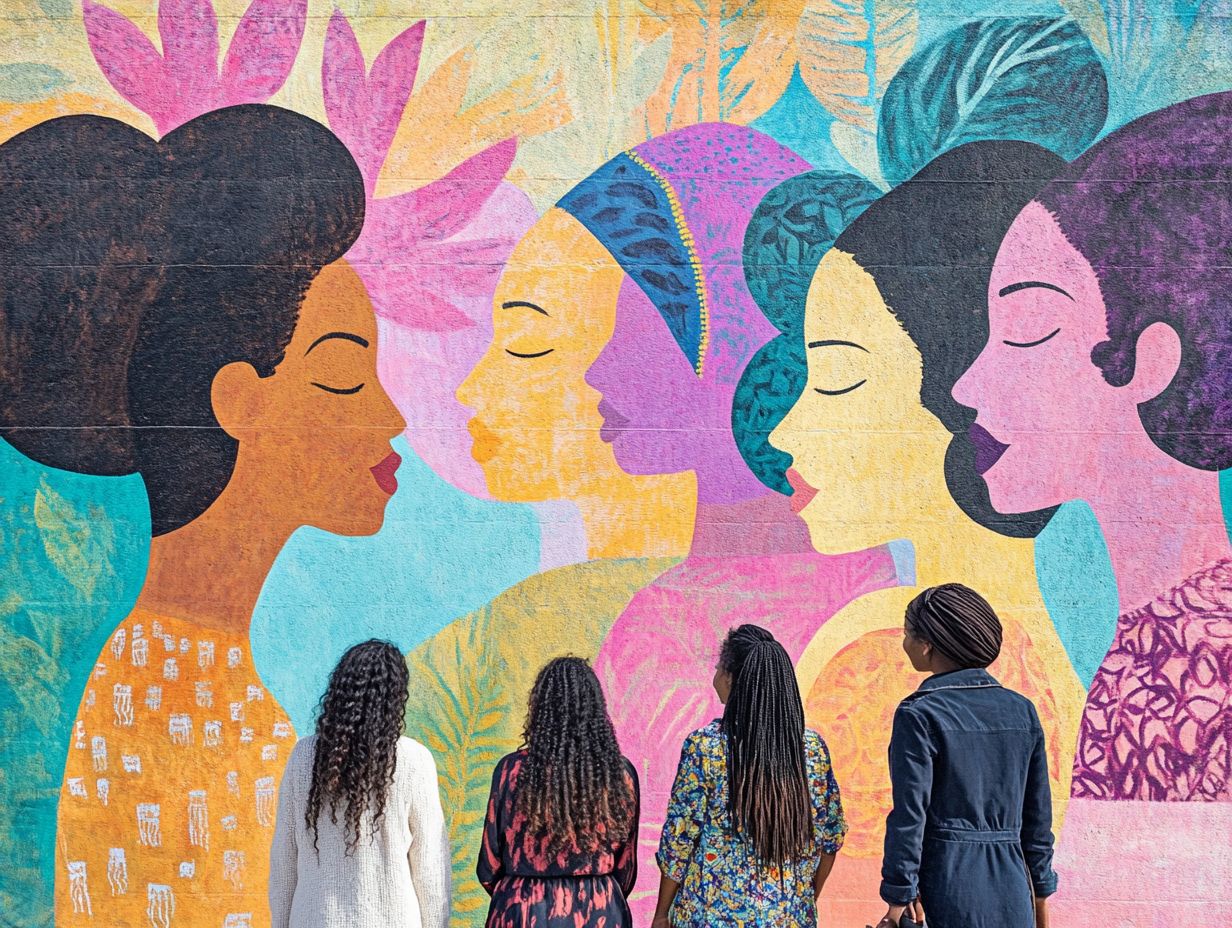Women have historically and continue to play fundamental roles in the creation and innovation of the media, yet their contributions are often unrecognized or undervalued.
This article examines the historical context of women’s representation in media and explores the current state of women’s roles in the industry today, highlighting how they are still marginalized and relegated to secondary positions.
We will discuss the impact of representation on societal views and individual identities, as well as the pressing need for greater diversity and inclusion in the media.
Through this analysis, we aim to address both the challenges and the progress being made toward a more equitable future for women in the media.
The Role of Women in Media

The role of women in media is a multifaceted domain that encompasses a rich tapestry of cultural representation, showcasing both the challenges and triumphs women experience in the film industry and television.
Historically, the media has been a powerful tool for shaping public perception, often reinforcing stereotypes while simultaneously providing a platform for female enablement and advocacy for women’s rights.
As we examine the intersections of gender equality, media narratives, and representation issues, it becomes evident that amplifying women’s voices is essential for fostering diversity in media and promoting equity within creative industries.
Historical Context
The historical representation of women in media illustrates the evolution of women’s portrayal over the years, highlighting key moments that have contributed to a broader understanding of gender representation, media ethics, and the philosophical foundations of women’s representation within historical contexts.
In the early days of film and literature, women were often depicted in stereotypical and limiting roles. However, the emergence of feminist media studies has prompted critical analyses of these representations and has fostered a deeper understanding of how historical portrayals have shaped contemporary perceptions.
For instance, early media often portrayed women as passive damsels in distress in silent films, but this shifted to more complex female characters in feminist films from the 1970s onward. During this transformative period, the struggles of figures like Susan B. Anthony and Virginia Woolf for equal rights were brought to the forefront through media stories, documentaries, and novels, significantly influencing the media landscape.
Additionally, the works of authors such as Toni Morrison highlighted how narratives about women of color interrogated issues of race and gender.
Ongoing critical analysis of today’s media through these lenses enables scholars to challenge the representation of women and encourages viewers to advocate for more authentic and enableing portrayals.
Current State of Representation
The current status of women’s representation in media highlights both challenges and progress toward inclusivity, with significant disparities still evident across film, television, and digital media platforms. Despite the increasing recognition of women’s contributions, under-representation persists, particularly in decision-making roles within the film industry, underscoring the need for greater equity in media and audience engagement.
For instance, recent data from the Annenberg Inclusion Initiative reveals that women hold only 6% of chairman, CEO, or president positions in the 100 top-grossing film studios, 11% of studio heads, 13% of chief creative officers, 20% of library heads, and 21% of production heads in the top 200 domestic-grossing films from 2007 to 2019 (Cynthia Littleton, 2023).
Women’s representation in digital media presents a complex picture. While women represent 61% of individuals in positions of power in the top-grossing films, they account for only 38% of those hired for behind-the-scenes technical roles, such as:
- cinematography
- directing
- editing
- hair and makeup
- sound
- stunts
- visual effects
- writing
This under-representation in underpaid and unpaid roles contributes to inequalities in the content produced and the visibility of female creators (according to Beyond Film).
Social media has opened up new avenues for women to express themselves publicly and creatively. However, a gap in engagement and visibility remains between male and female content creators. Data from the 2020 Women in Content Creation Survey by Tink Media indicates that male influencers have more than twice the number of followers compared to female influencers (54% to 26%), and women comprise only 42% of the top 1,000 creators. Additionally, the same survey found that women experienced 54% of hate comments and 58% of trolling behavior during 2019-2020 (Cynthia Littleton, 2023).
Statistics from the 2022 Gender Equality in Film and Television Report by the United Nations Educational, Scientific and Cultural Organization (UNESCO) reveal that films featuring female protagonists earn 20% more at the box office. This is particularly ironic given that only 34% of films with female protagonists were part of the 100 top-grossing films in 2020, a figure that is 10% lower than in 2015 (Cynthia Littleton, 2023).
Recognizing these disparities is essential, and implementing initiatives to achieve true gender representation and enable female creators across all forms of media is imperative.
Impact of Representation on Society

The impact of representation on society is profound, as media portrayals shape audience perceptions and contribute to the establishment of cultural narratives surrounding gender roles and identities.
Positive social change arises from the depiction of women as enableed protagonists in various storytelling mediums, as this challenges harmful gender stereotypes and enhances the visibility of underrepresented voices in media.
The influence of representation is evident in how storytelling shapes social norms and narratives.
Effects on Gender Stereotypes
The effects of media representation on gender stereotypes are diverse; they often reinforce traditional roles while also providing opportunities to challenge and reshape narratives through feminist theory and activism.
The persistent portrayal of women through cultural stereotypes can negatively influence public perception and societal norms, highlighting the importance of addressing representation challenges on media platforms.
For example, films like *Wonder Woman* and shows such as *The Marvelous Mrs. Maisel* not only feature enableed female leads but also encourage viewers to reevaluate their definitions of strength and ambition.
In contrast, narratives in certain reality television shows tend to reinforce harmful stereotypes, reducing multi-faceted identities to overly simplistic tropes. This inconsistency in representation can obscure societal perceptions of gender roles, underscoring the need for creators to be intentional and thoughtful about the stories they choose to tell.
As society evolves, media representation should also adapt, curating narratives that reflect diverse experiences.
Influence on Self-Perception and Identity
The impact of media representation on self-perception and identity is significant, influencing how women view themselves and their roles within the broader societal context. The depiction of female characters and narratives can either reinforce or challenge audience expectations. Consequently, the effects on women’s experiences and their concepts of cultural identity can vary widely across different contexts and demographics.
This ongoing interaction between media representation and self-perception highlights the necessity for diverse portrayals that resonate with various cultural backgrounds. When women see themselves represented in a genuine, enableed, and authentic manner, it can foster a positive self-image and boost their confidence. Conversely, negative portrayals can perpetuate harmful norms, leading to low self-esteem and increased societal pressures.
Audiences often subconsciously seek validation of their own experiences in media narratives, underscoring the importance of authentic representation for societal progress. The relationship between media representation and self-perception will continue to be a vital area of study in the broader conversation about women’s complex narratives in today’s world.
Challenges Faced by Women in Media

Women in the media encounter numerous challenges, including gender discrimination and inequality, which restrict their opportunities for creative expression and professional advancement.
The lack of diversity and inclusion across various media platforms exacerbates representation issues and hinders the development of enableing narratives that could inspire a new generation of women to overcome societal and cultural limitations.
Gender Discrimination and Inequality
Gender discrimination in media is a longstanding issue that manifests in various forms across different power dynamics, predominantly affecting women in the industry. Although there has been some progress, the reality remains that women filmmakers and creators frequently face barriers to equitable access in media, underscoring the significance of representation for achieving gender equality.
These barriers include unequal funding opportunities, limited access to distribution channels, and exclusion from decision-making positions. Consequently, women’s experiences and perspectives are often overlooked in the narratives presented in media, resulting in a male-centric and often patronizing portrayal of women.
This not only diminishes the accuracy of media content but also reduces audience engagement, alienating a significant portion of potential viewership. As societal awareness of these issues grows, so does the demand for fair representation of women in storytelling, making change within the industry increasingly essential.
Lack of Diversity and Inclusion
The lack of diversity and inclusion in media is a significant barrier to authentic representation, often leading to the marginalization of voices and stories that reflect cultural diversity. When diverse representation is absent, stereotypes are perpetuated, and audiences miss the opportunity to encounter a wider range of narratives that resonate with their own lived experiences.
This situation is problematic, as media has the power to alienate entire demographic groups when they are not represented. Consequently, a cycle emerges in which minority voices are excluded, depriving them of a platform and denying the majority the nuanced experiences that should be shared and understood.
Media creators must strive to establish inclusive spaces, as doing so not only benefits audiences in terms of empathy and understanding but also enhances audience engagement and loyalty. By fostering varied representation, media can produce content that authentically reflects the world we live in, ultimately enriching the depth and breadth of storytelling within the cultural landscape.
Efforts Towards Inclusive Representation

Efforts to achieve inclusive representation in media are gaining momentum globally as initiatives and progressive movements work to broaden storytelling and representation frameworks.
Activist feminism continues to challenge the patriarchy, driving the demand for inclusion that seeks to amplify women’s voices and diversify the narratives presented in film and television.
Initiatives and Progress in the Industry
Numerous initiatives within the media industry are making significant strides toward enhancing representation and advocating for female enablement across various platforms. From policy changes to grassroots movements, these efforts aim to create a more inclusive environment that supports diverse voices and narratives, challenging traditional norms of media portrayal.
Recent campaigns, such as #MeToo and Time’s Up, have sparked public discourse and prompted networks and studios to implement stricter hiring practices and clearer reporting channels for harassment, thereby ensuring safer workplaces. Mentorship programs specifically designed for women in film and television have also emerged, connecting emerging talent with seasoned professionals who can guide them through the complexities of the industry.
These initiatives not only amplify female perspectives but also help dismantle barriers that have historically restricted women’s roles both behind and in front of the camera. As a result, audiences are now experiencing richer storytelling that reflects a broader array of experiences and identities.
Importance of Intersectionality in Representation
The importance of intersectionality in representation lies in its ability to foster a nuanced understanding of how diverse identities intersect and inform the portrayal of women in media. It also promotes social justice by centering intersectionality in narratives that reflect cultural identities and diverse experiences.
By understanding intersectionality, we can draw deeper connections between various identities, such as race, class, sexuality, and ability. This richer narrative landscape has significant implications for storytelling. When the perspectives of all relevant identities are included, audiences gain a more comprehensive view of the complex realities of women’s lives.
This not only enhances understanding and empathy for the lived experiences of others but also helps dismantle stereotypical representations of women in mainstream media. Recognizing the intersections of identities ensures that stories resonate with a broader audience and enable those who are often marginalized, thus fostering a more just and equitable media industry.
Therefore, intersectionality is not merely an abstract theoretical framework; it is a crucial lens through which we can drive meaningful change in storytelling.
The Future of Women in Media
The future of women in media looks promising, as advocacy and awareness campaigns are anticipated to persist in challenging existing narratives surrounding gender representation.
These efforts aim to shift cultural attitudes towards greater acceptance of women’s stories and voices, ultimately enhancing the media representation of women’s rights.
Potential for Change and Improvement
Many creatives are advocating for better representation of women in media, calling for inclusive storytelling that highlights the diverse roles and experiences of women. This approach not only increases visibility but also promotes more ethical storytelling that respects and acknowledges women’s contributions across various cultural contexts.
As audiences become more aware of the importance of representation, the demand for narratives that enable women from different backgrounds continues to grow. Creative teams should focus on storytelling that authentically reflects women’s lived experiences, challenging stereotypes and broadening understanding.
The ethical aspect of this endeavor lies in telling these narratives with care and sensitivity, ensuring that women’s voices and experiences remain central. By prioritizing authentic representation, the media can influence public perceptions in ways that foster an inclusive culture, allowing diverse perspectives to thrive.
